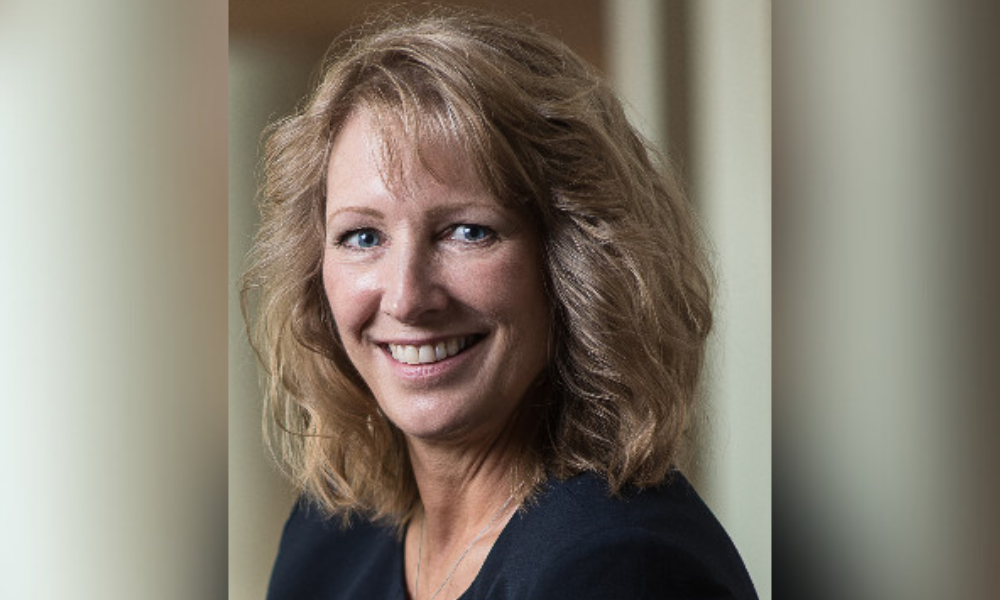
HR director at Mutual Fire Insurance Company of British Columbia discusses power of upskilling amid talent shortages

According to a Gartner survey, 70% of HR leaders report that their organizations are not effectively building the skills needed for the future. Why? It’s a mix of lack of planning, fierce competition for talent and the sheer unknown of what qualities will be prized in the years to come.
At The Mutual Fire Insurance Company of British Columbia, human resources director Monica Niles is navigating challenges like future-skilling, automation, and diversity while fostering a culture that prioritizes growth from within.
Speaking to HRD, she explains that their flat management structure means that everyone has a chance to upskill and develop from the ground up.
"Our management and leadership team work to align skills and competencies that are constantly evolving. We have regular one-on-one sessions where staff skills are assessed, their goals are discussed, and gaps are identified together. Formal succession plans are created and reviewed annually for our management team.”
It's a very flat organization, with nine managers across all areas of the company, she says.
“Under them, we’ve developed a new leadership team of 12 up-and-coming leaders who meet monthly to discuss leadership qualities, emotional intelligence, change management challenges, and what it means to be a successful leader."
According to data from World Economic Forum, employers anticipate that 44% of workers' skills will be disrupted in the next five years, with nearly 60% of employees requiring training before 2027 to meet evolving job requirements. What’s more, a significant majority of Millennial and Gen Z workers expect employers to provide learning opportunities, with 93% indicating that access to upskilling is a decisive factor in their employment choices.
And then there’s the role of succession planning – an often-overlooked part of the employee lifecycle that leaders tend to look at curatively rather than preventatively.
Succession planning at Mutual Fire, however, isn’t just a checklist item; it’s embedded into the company's long-term development goals, says Niles.
"We provide opportunities for everyone to be a leader. We have several committees and initiatives where staff can practice leadership styles and grow their confidence. Through continuing education, we ensure our people stay up to date on technology innovations, changes in the insurance industry, and improving their soft skills.
The organization’s in-house learning platform is well-used by staff and includes a wide range of courses—technical skills, sustainability, diversity, soft skill, and insurance-specific training, she says.
“Staff are regularly evaluated and mentored so they can easily move into more challenging roles. Those in senior roles also mentor those just beginning their careers in insurance, helping them find their passion. There are so many avenues in insurance—it’s just phenomenal."
When considering any succession planning strategy, HR leaders are sometimes guilty of ignoring the importance of diversity and inclusion here. Research from Gartner found that over half of diversity and inclusion (D&I) leaders identified influencing succession planning efforts as a top priority, with organizations who boast more diverse leadership teams 35% more likely to outperform their industry peers.
"Being mutually minded and community minded is crucial to determining whether someone will move forward in our hiring process,” added Niles. “We don’t use bias in hiring because that could impact our judgment toward a potential great addition to the team. We can teach skills, but having a mutual-minded mindset—well, you can’t teach that. It has to come from within."
And, while the company received recognition for diversity and inclusion over the years, it wasn’t until recently that it formalized a policy.
"A company can’t exist for long without diversity," Niles states. "Diversity is required to grow because we need to challenge how things are done. Our management team has nine members—six are women, and two are racial minorities. In our leadership team of 12, nine are women, and five are either racial minorities or from underrepresented groups."
Mutual Fire's diverse teams are delivering measurable results. Through their diversity, Niles explained that they’ve achieved above-average profitability. And, just looking at underwriting, not investments, they’ve also outperformed their peer comparisons over the past five years.
“It shows that diversity truly makes a difference. Anyone can be a leader. Mentoring opportunities and leadership roles on committees and initiatives help staff grow their capabilities. They can move into different departments or take on more senior roles, and as they do, they’re mentored by others."
And Niles is quick to point out that at Mutual Fire, none of this success is left to chance – effectiveness is planned, tracked and tweaked to ensure optimal output.
"Historically, we’ve tracked the progress of identified successors through their development programs," Niles explains. "We measure improvements in skills and competencies during ongoing performance discussions. If development programs aren’t producing the expected results, we pivot and re-evaluate the training or mentoring provided.”
In the last five years, all management positions have been filled through internal promotions, with no external recruitment, she says.
“The last time we hired externally was five years ago, when I was brought on because there was no HR personnel available to transition into the role."